After an intense workout, it’s tempting to hit the showers and move on with your busy day. But taking a few minutes to stretch, breathe, and relax gives your body a chance to (literally) cool down. Although a cool-down may not decrease muscle soreness or improve your range of motion, it’s important for your cardiovascular system.
Here, we’ll explain how to build a cool-down routine with the best mobility exercises and why to do it. We’ll list the best cool-down exercises for stretching each major muscle group. After you warm up and work out, let your heart rate settle with these cool-down exercises.

Editor’s Note: The content on BarBend is meant to be informative in nature, but it should not be taken as medical advice. When starting a new training regimen and/or diet, it is always a good idea to consult with a trusted medical professional. We are not a medical resource. The opinions and articles on this site are not intended for use as diagnosis, prevention, and/or treatment of health problems. They are not substitutes for consulting a qualified medical professional.
Cool Down Exercises
Save some time for a cool down in your workout routine. After light cardio to reduce your heart rate, aim to spend at least 10 minutes on a few cool-down stretches. These cover all your major muscle groups, so you can get a nice full-body stretch before moving on with your day.
- Light Cardio
- Shoulder Stretch
- Triceps Stretch
- Wall Calf Stretch
- Half-Kneeling Quad Stretch
- Assisted Supine Hamstring Stretch
- Seated Forward Bend
- Knee-to-Chest
- Child’s Pose
Light Cardio
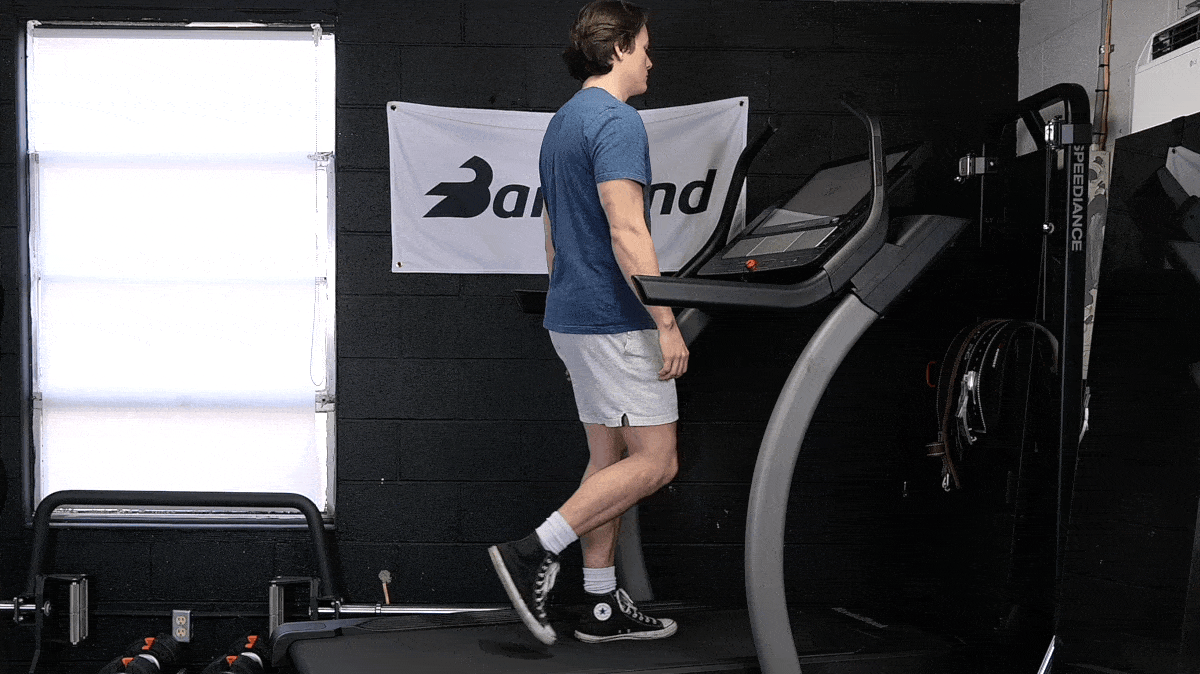
[Read More: The Best Cardio Workouts at Home to Boost Your Fitness Without a Treadmill]
Target Muscles: Light cardio helps cool down your cardiovascular system. Depending on what type you choose, it can target your full body. A light jog primarily targets your lower body, hamstrings, hips, and glutes.
- Take a light jog, walk, cycle, or swim.
- Start at a moderate pace and gradually slow down.
- Go for five to 10 minutes, reducing your speed significantly as you reach the end.
- Focus on breathing deeply throughout.
Shoulder Stretch
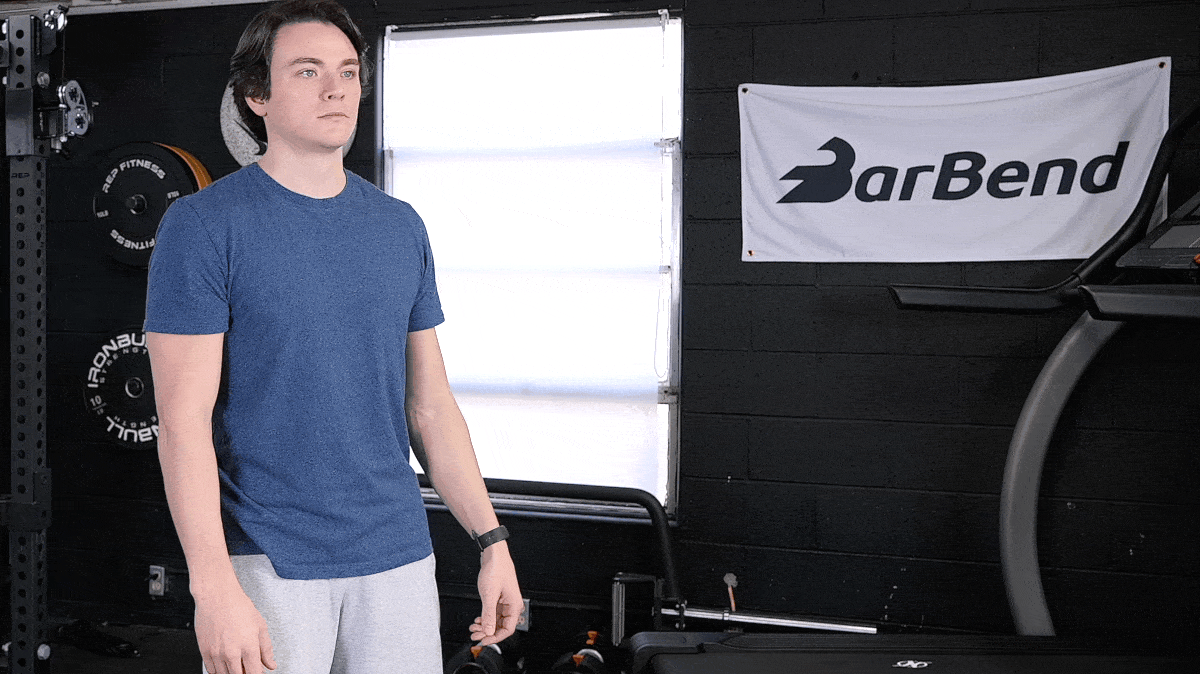
[Read More: Try These 11 Best Shoulder Warm-Up Exercises to Raise the Roof on Overhead Lifts]
Target Muscles: An overhead shoulder stretch targets your shoulders (rotator cuff, deltoids, trapezius), latissimus dorsi (lats), and other upper body muscles.
- Stand upright with your feet shoulder-width apart.
- Lift your right arm overhead. Bend your right elbow so that your right hand touches the back of your neck.
- Lift your left arm. Place your left hand on your right elbow and gently push to deepen the stretch. Hold for 20 to 30 seconds, breathing deeply.
- Switch sides and repeat to stretch your left side.
Triceps Stretch
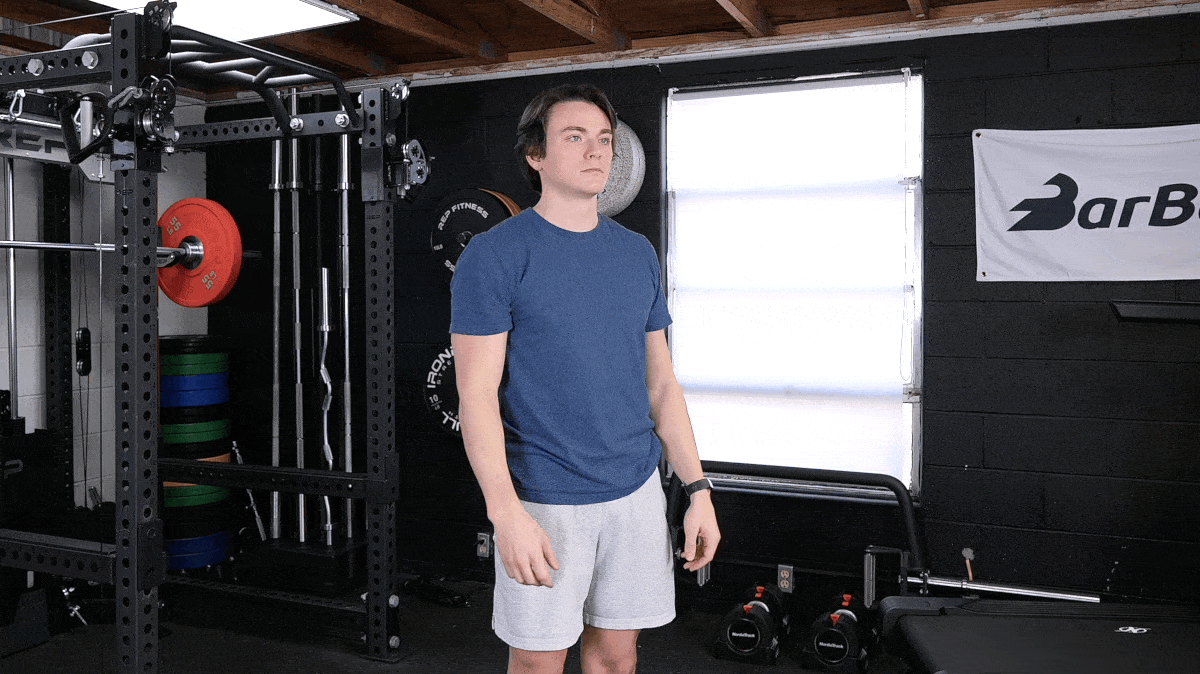
[Read More: The 8 Best Biceps Stretches to Support Long-Term Arm Thickness and Strength]
Target Muscles: The cross-body triceps stretch targets your triceps brachii — the long, medial, and lateral heads.
- Stand upright with your feet shoulder-width apart.
- Reach your left arm across your body.
- Place your right hand on your left triceps and gently push. Hold for 20 to 30 seconds.
- Switch sides and repeat to stretch your right side.
Wall Calf Stretch
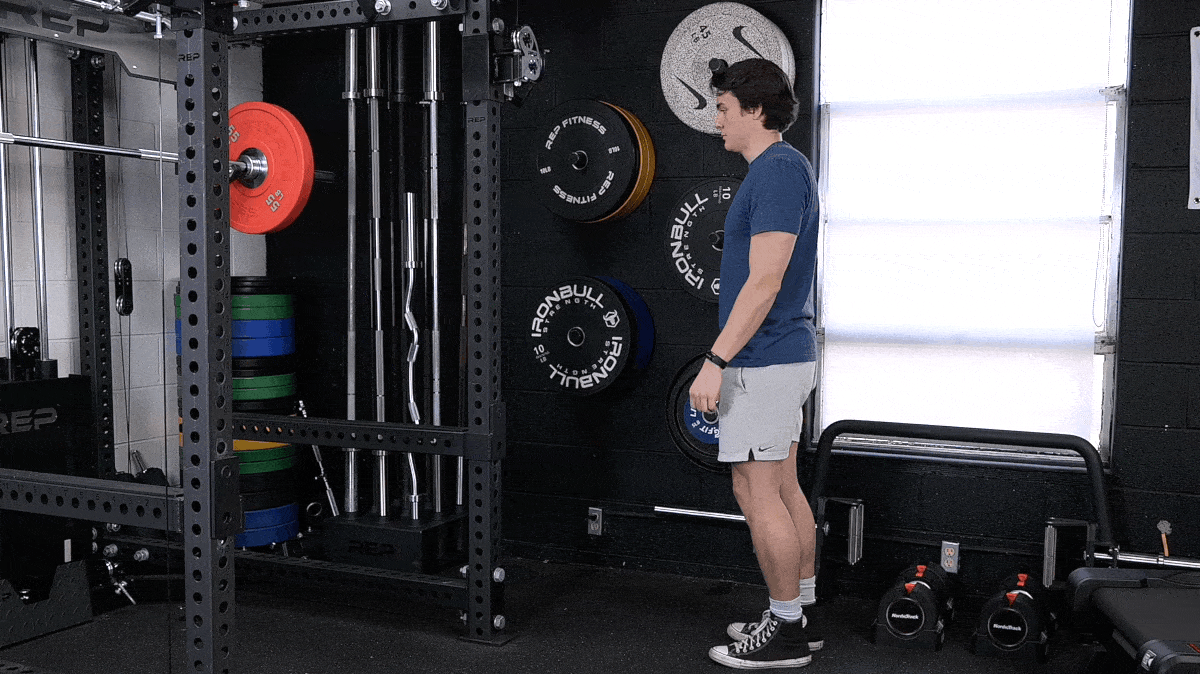
Target Muscles: The wall calf stretch targets your calf muscles, which include your soleus and gastrocnemius.
- Stand upright, facing a wall. Place your hands on the wall.
- Step your left foot back behind you. Keep your left leg straight.
- Bend your right knee towards the wall. Feel the stretch in your left calf. Hold for 20 to 30 seconds.
- Step your left foot forward. Step your right foot back to switch sides and repeat.
Half-Kneeling Quad Stretch
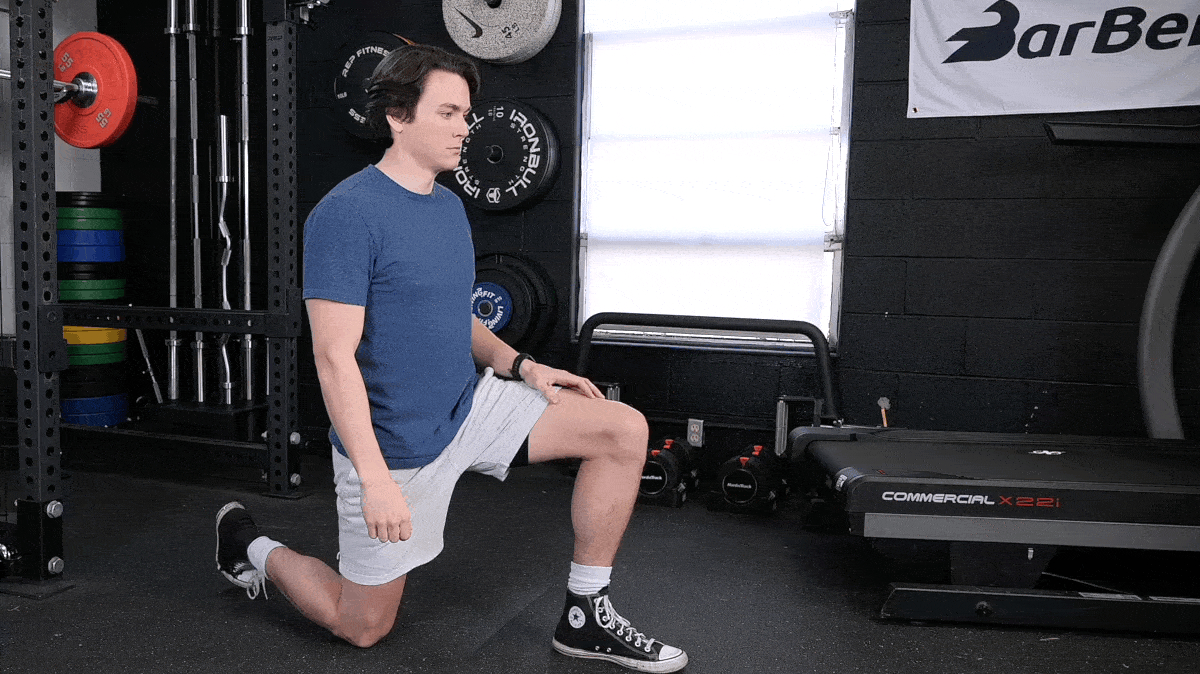
[Read More: The 10 Best Leg Stretches to Bolster Your Lower Body Training]
Target Muscles: The half-kneeling quad stretch stretches your quadriceps muscles and hip flexors.
- Start in a half-kneeling position, like the bottom of a lunge, with your right foot forward and your left knee down. Keep both knees at a 90-degree angle.
- Tuck your left hip and squeeze your glutes. Feel a stretch in the front of your left thigh.
- Hold for 20 to 30 seconds. Switch sides to stretch the front of your right thigh.
- For more intensity, place your back foot on a wall. Focus on squeezing your glutes rather than leaning forward.
Assisted Supine Hamstring Stretch
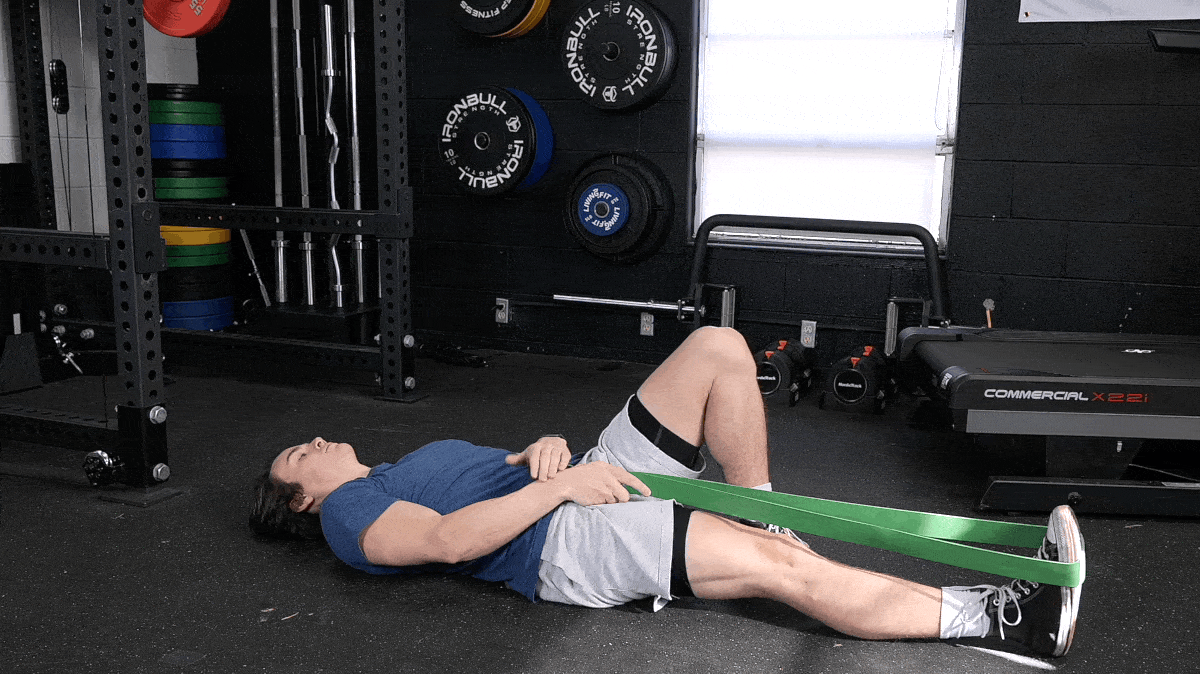
[Read More: The 6 Best Hamstring Stretches to Add to Your Routine]
Target Muscles: The assisted supine hamstring stretch targets your hamstring and some of your lower back.
- Lie on your back. Place your left foot on the floor. Lift your right leg up, keeping it straight.
- Loop a towel or resistance band around the sole of your right foot.
- Keep your leg straight. Pull the towel or band to bring your leg closer to you. Feel the stretch in your right hamstring and hold for 20 to 30 seconds. Breathe deeply.
- Lower your right leg and switch sides. Stretch your left side for 20 to 30 seconds.
Seated Forward Bend

Target Muscles: The seated forward bend targets your hamstrings and lower back muscles. Keep your legs straight to target your hamstrings more. Bend your knees deeply for a greater release in your lower back.
- Sit upright with your legs stretched out in front of you, with your inner thighs touching. Bend your knees slightly.
- Engage your abs and hinge at your hips to bend forward. Maintain a neutral spine. Grab onto your legs, ankles, or feet — wherever you can.
- Loop a towel or resistance band around the soles of your feet for assistance. Hold the stretch for 20 to 30 seconds. Breathe deeply.
- Return to the starting position and repeat one or two more times.
Knee-to-Chest
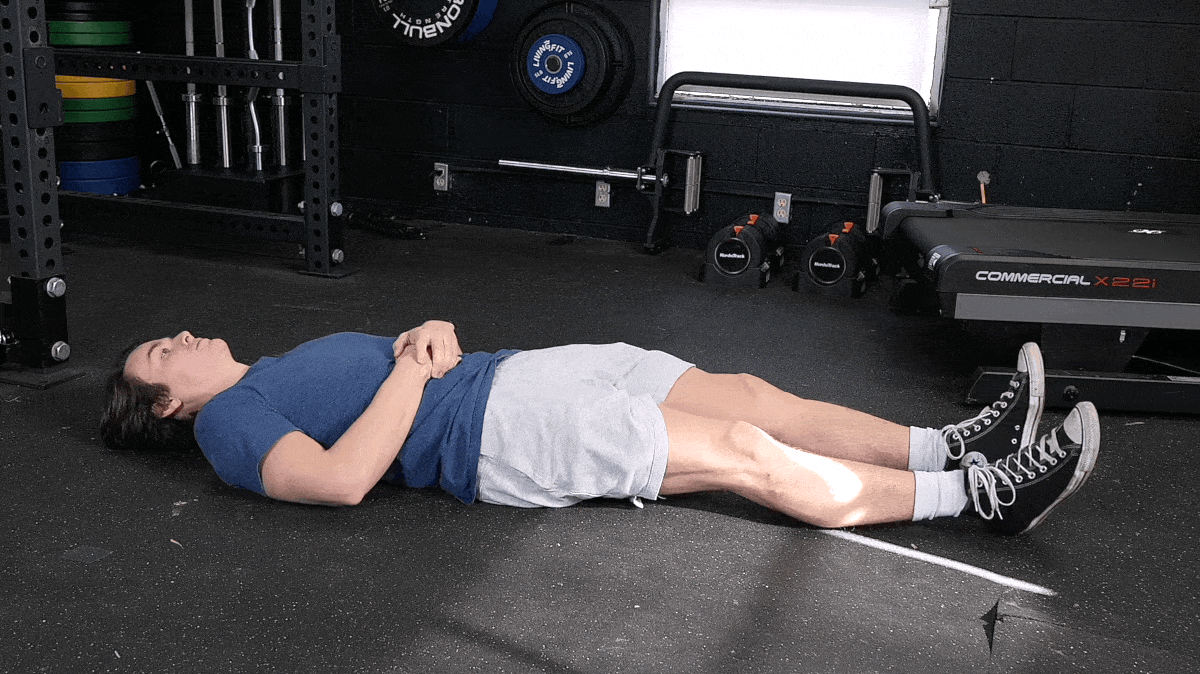
[Read More: How to Do Crunches: Proper Form, Variations, & Benefits]
Target Muscles: The knee-to-chest targets your lower back and hip flexors.
- Lie on your back with your legs extended. Bend your right knee and bring it towards your chest.
- Place your hands on your shin to pull your right knee closer. Relax your head, neck, and shoulders.
- Hold for 20 to 30 seconds and breathe deeply.
- Release your right knee and stretch your right leg out. Bring your left knee in to switch sides and repeat.
- You can also bring both knees to your chest for a deeper lower back stretch.
Child’s Pose

[Read More: The 11 Best Yoga Poses for Beginners to Support Bigger, Better Lifts]
Target Muscles: Child’s pose is a full-body stretch. It targets your lower body — hips, lower back, quads, and glutes — and relaxes your upper body, particularly your lats and shoulders.
- Start in a tall kneeling position. Sit back onto your heels.
- Reach your arms forward, then lower your chest toward the floor, stretching your arms out in front of you.
- Place a folded-up towel between your hips and your heels if there is a lot of space between them.
- Hold the position for 20 to 30 seconds and breathe deeply. Sit back up and repeat.
What Is a Cool Down?
A cool-down typically involves five to 15 minutes of low- to moderate-intensity activity, including light cardio and static stretches for the muscles you just worked. During this routine, your heart rate recovers, your blood pressure gets regulated, and your body temperature cools.
During any type of physical activity, whether it’s weightlifting, cardio, HIIT (high-intensity interval training), or Pilates, your heart rate, blood pressure, and blood flow all increase. Lactic acid may build up in your blood and muscles. A dynamic warm-up with dynamic stretching helps your body prepare for physical activity, and a cool-down starts the recovery process.
What Makes An Exercise Ideal for Cool Downs?
When choosing your cool-down exercises, you want activities that don’t cause further fatigue or muscle damage. Your cool-down exercises should be much less intense than whatever you did for your workout. For example, if you were on a run, you’ll slow it down with a light jog or walk.
After a few minutes of light cardio, choose static stretches to stretch the muscles you just targeted. If you did lunges and push-ups in your workout, stretch your quads, calves, triceps, and chest. If you did squats and deadlifts, choose static stretches for your hamstrings, glutes, and hip flexors. Overhead press? Stretch your shoulders and upper body.
[Read More: 4 Bodyweight Warm-Up and Cool-Down Mobility Drills]
While it’s commonly believed that stretching the muscles you just worked helps prevent delayed-onset muscle soreness (DOMS), the research is mixed. However, stretching these areas helps improve blood flow to the rest of your body. While you train, blood gathers in the muscles you’re working. Cooling them down sends blood flowing back through your veins to your heart and brain.
Benefits of a Cool Down
Research shows that a cool-down does not significantly decrease muscle soreness, reduce muscle damage or stiffness, or improve range of motion. A cool-down does improve recovery for your cardiovascular system. (1)
Here are the top cardiovascular and psychological benefits of a cool down.
- Lactic Acid Removal: Lactic acid accumulates in your blood and muscles when you exercise. Research shows that a cool-down helps speed up lactic acid removal from your blood. That may be a reason some people perceive less muscle soreness. (1)(2)
- Improves Blood Flow: As blood builds up in your muscles while they contract during training, an active cool-down helps send your blood back through your veins to your heart, skin, and brain. Better blood flow after training also stops your blood from pooling in your veins, which can lead to feeling dizzy, lightheaded, or fainting. (1)(3)
- Heart Rate Recovery: Your heart rate elevates while you exercise. During a cool-down, you give it time to return to normal. Improving heart rate recovery can also help you improve heart rate variability (HRV). (1)
- Blood Pressure and Temperature Regulation: When you engage in physical activity, your blood pressure and body temperature temporarily increase. When you stop exercising, your blood pressure and body temperature return to normal. Spending a few minutes in a cool-down improves blood flow, which helps lower blood pressure and improves thermoregulation. Research shows it’s particularly important if you exercise in the heat. (4)
- Psychological Wellness: Many studies show that a cool-down simply feels good, which can improve perceived recovery. A cool-down gives you time to relax and socialize. Athletes also enjoy the time together to discuss the game or event. (1)
What the Science Says About Cool Down Exercises
Science generally shows that an active cool-down is better than not doing one at all. However, the research is mixed.
- Placebo Effect: Many people believe in the potential benefits of an active cool-down since they are popular and widespread. The belief can lead to a placebo effect. In one study, researchers found that how much athletes believed an active cool-down worked positively affected their later performance. Their perception affected their performance on par with their physiological recovery markers. (5)
- Lactic Acid Removal: Some evidence suggests an active cool-down consisting of low to moderate-intensity exercise helps remove lactic acid from your blood but not your muscle tissue. The relevance of faster lactic acid removal is debatable and may not impact muscle soreness. (1)
- Lactic Acid Removal: Both the American Heart Association (AHA) and the American Council on Exercise (ACE) state that a cool-down helps remove lactic acid from your blood and muscles. (2)(3)
- Cardiovascular Recovery: The AHA notes that your heart rate and body temperature are higher than normal during exercise, and your blood vessels dilate. They advise that stopping your workout without cooling down to let these markers return to normal could lead to feeling sick or passing out. (2)
- May Reduce Injury Risk: One study notes that a cool-down may theoretically manage injury risk in future training. Better recovery leads to less fatigue, leaving you more alert and focused in your next session. However, many studies fail to find a definite link. (1)
- Does Not Reduce DOMS or Increase ROM: Many studies suggest that static stretches in an active cool-down do not reduce muscle soreness, increase range of motion or flexibility, or decrease stiffness. (1)
- May Reduce DOMS: However, nothing is black and white, and here are three instances where an active cool-down did decrease muscle soreness:
- Young soccer players reported less perceived muscle soreness four to five hours after an active cool-down than soccer players who did not perform a cool-down. (1)
- A study at California State University showed that after performing strength training, people who did low-intensity cycling as an active cool-down had less perceived muscle soreness than those who did not. They hypothesize it was due to increased blood flow during the cycling cool-down. (3)
- Another study looked at groups of people performing lunges in a strength workout. One group did 20 minutes of cycling as an active warm-up, one group did 20 minutes of cycling as an active cool-down, and one did neither. The dynamic warm-up and the cool-down group both had less perceived muscle soreness in their quads. The cool-down group had significantly less quad soreness on day two than the warm-up group. (6)
Cooling Down
Spending some time after your workout to cool down helps your heart rate, blood pressure, and body temperature come back down. Choose from our favorite cool-down exercises for your shoulders, triceps, calves, quads, hamstrings, glutes, hips, and lower back.
Research varies: it is difficult to measure whether or not a cool-down reduces soreness since it comes down to perception. Many studies also show that if you believe a cool-down improves recovery, it will help. Either way, a cool down is a few minutes to relax and breathe, and reducing stress is also important for recovery.
FAQs
Let’s wrap up with some FAQs on cool-downs.
What is a cool-down?
A cool-down is a few minutes of low- to moderate-intensity activity at the end of your workout. It consists of light cardio and stretching. A cool-down helps your heart rate, body temperature, and blood pressure return to normal, improves blood flow, and speeds up the removal of lactic acid from your blood. It can also prevent blood from pooling in your veins, which can lead to dizziness or fainting.
What are cool-down exercises for muscles?
Cool-down exercises can be broken up into light cardio and stretching. Light cardio can be a light jog, walk, cycle, swim, row, elliptical, or something else you enjoy. You can do dynamic or static stretches afterward to stretch all the muscle groups you used in your workout.
How long should a cool-down last after intense exercise?
A cool-down should last five to 20 minutes and generally needn’t be longer than 30 minutes.
References
- Van Hooren B, Peake JM. Do We Need a Cool-Down After Exercise? A Narrative Review of the Psychophysiological Effects and the Effects on Performance, Injuries and the Long-Term Adaptive Response. Sports Med. 2018 Jul;48(7):1575-1595.
- American Heart Association. (2024, January 16). Warm Up, Cool Down. Heart.org.
- Crockford, J. (2014, January 9). Five Reasons You Shouldn’t Skip Your Cool-down After Exercise. ACE Fitness.
- Seeley AD, Giersch GEW, Charkoudian N. Post-exercise Body Cooling: Skin Blood Flow, Venous Pooling, and Orthostatic Intolerance. Front Sports Act Living. 2021 May 17;3:658410.
- Cook CJ, Beaven CM. Individual perception of recovery is related to subsequent sprint performance. Br J Sports Med. 2013 Jul;47(11):705-9.
- Olsen O, Sjøhaug M, van Beekvelt M, Mork PJ. The effect of warm-up and cool-down exercise on delayed onset muscle soreness in the quadriceps muscle: a randomized controlled trial. J Hum Kinet. 2012 Dec;35:59-68.